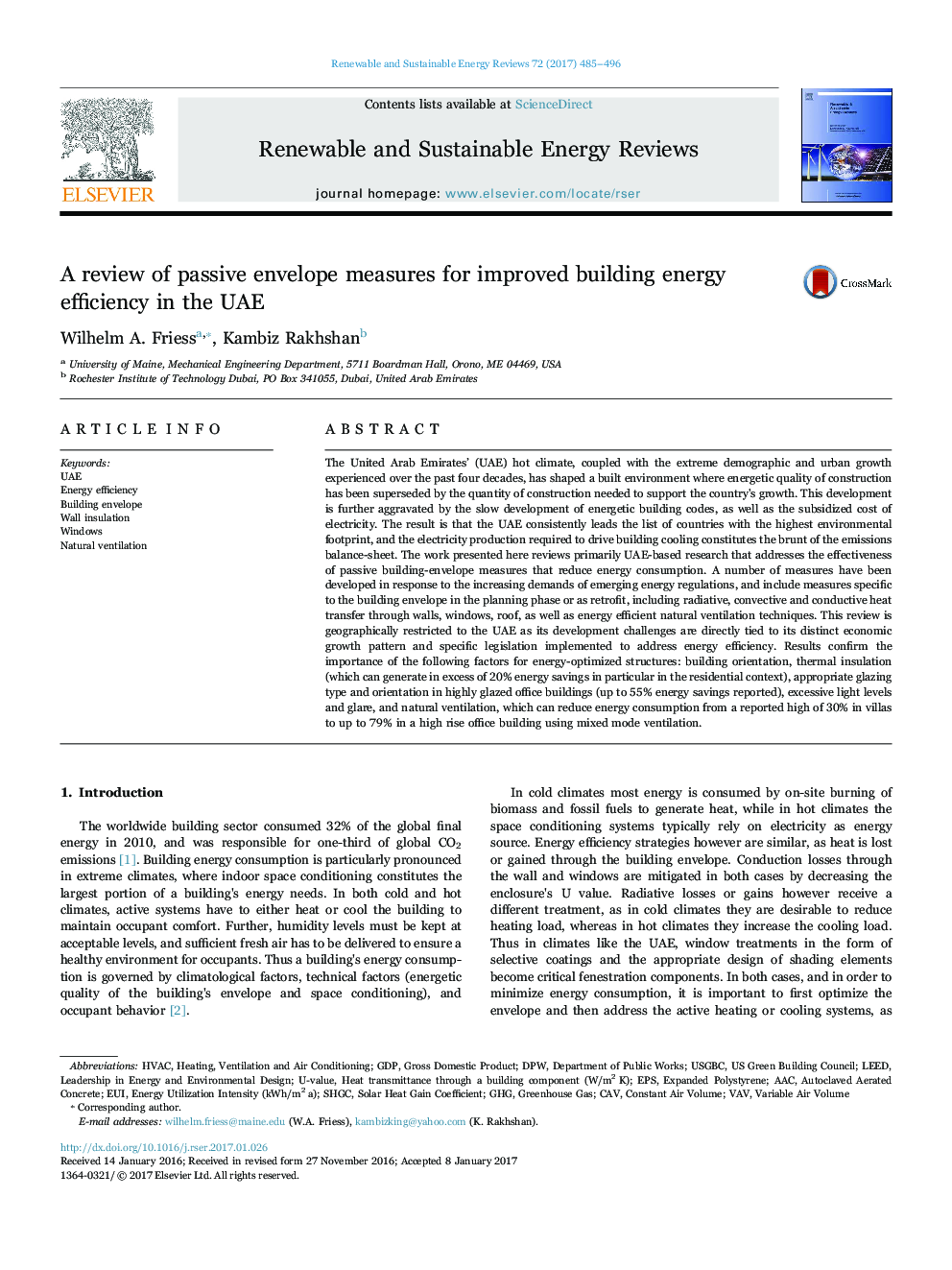| Article ID | Journal | Published Year | Pages | File Type |
|---|---|---|---|---|
| 5482382 | Renewable and Sustainable Energy Reviews | 2017 | 12 Pages |
Abstract
The United Arab Emirates' (UAE) hot climate, coupled with the extreme demographic and urban growth experienced over the past four decades, has shaped a built environment where energetic quality of construction has been superseded by the quantity of construction needed to support the country's growth. This development is further aggravated by the slow development of energetic building codes, as well as the subsidized cost of electricity. The result is that the UAE consistently leads the list of countries with the highest environmental footprint, and the electricity production required to drive building cooling constitutes the brunt of the emissions balance-sheet. The work presented here reviews primarily UAE-based research that addresses the effectiveness of passive building-envelope measures that reduce energy consumption. A number of measures have been developed in response to the increasing demands of emerging energy regulations, and include measures specific to the building envelope in the planning phase or as retrofit, including radiative, convective and conductive heat transfer through walls, windows, roof, as well as energy efficient natural ventilation techniques. This review is geographically restricted to the UAE as its development challenges are directly tied to its distinct economic growth pattern and specific legislation implemented to address energy efficiency. Results confirm the importance of the following factors for energy-optimized structures: building orientation, thermal insulation (which can generate in excess of 20% energy savings in particular in the residential context), appropriate glazing type and orientation in highly glazed office buildings (up to 55% energy savings reported), excessive light levels and glare, and natural ventilation, which can reduce energy consumption from a reported high of 30% in villas to up to 79% in a high rise office building using mixed mode ventilation.
Keywords
Constant Air VolumeEUIDpWSHGCVAVLEEDAACEPSGHGCAVU-valueUAEAutoclaved aerated concreteEnergy efficiencyNatural ventilationHVACGross domestic productGDPVariable air volumeLeadership in Energy and Environmental DesignSolar heat gain coefficientWall insulationBuilding envelopeExpanded polystyreneWindowsGreenhouse gasHeating, Ventilation and Air Conditioning
Related Topics
Physical Sciences and Engineering
Energy
Renewable Energy, Sustainability and the Environment
Authors
Wilhelm A. Friess, Kambiz Rakhshan,
